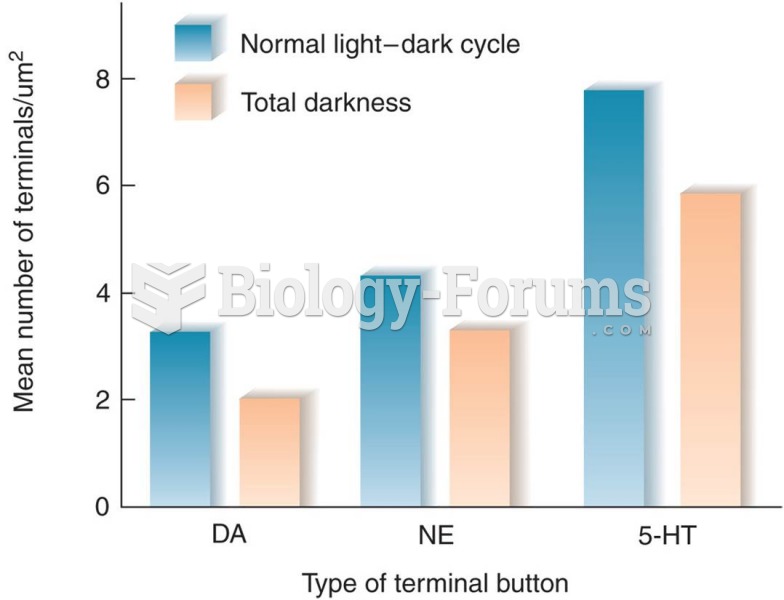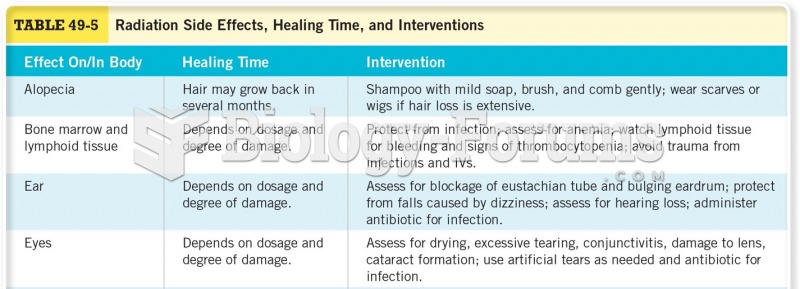|
|
|
Nearly 31 million adults in America have a total cholesterol level that is more than 240 mg per dL.
After 5 years of being diagnosed with rheumatoid arthritis, one every three patients will no longer be able to work.
In most cases, kidneys can recover from almost complete loss of function, such as in acute kidney (renal) failure.
More than 20 million Americans cite use of marijuana within the past 30 days, according to the National Survey on Drug Use and Health (NSDUH). More than 8 million admit to using it almost every day.
Dogs have been used in studies to detect various cancers in human subjects. They have been trained to sniff breath samples from humans that were collected by having them breathe into special tubes. These people included 55 lung cancer patients, 31 breast cancer patients, and 83 cancer-free patients. The dogs detected 54 of the 55 lung cancer patients as having cancer, detected 28 of the 31 breast cancer patients, and gave only three false-positive results (detecting cancer in people who didn't have it).







